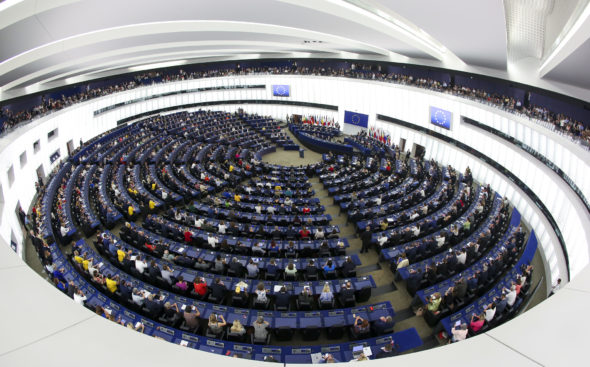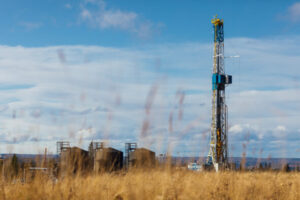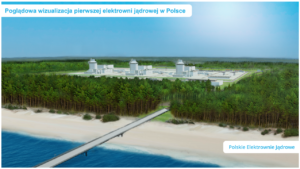The EU taxonomy for sustainable activities has made headlines in recent days. It even made breaking news on major news channels. Unfortunately, many headlines and articles have been misleading in suggesting that the taxonomy recognizes natural gas as green energy. On the contrary. This statement has as much truth as saying that anyone can study at the best university. It would seem that this is true, but it is the admissions criteria that make it otherwise – writes Paweł Wróbel, Head of Gate Brussels in an analysis for BiznesAlert.pl.
All of this is thanks to the vote in the European Parliament on the conditions for allowing natural gas and nuclear energy to be included in the green label investment catalogue. This is important, because green investments are the most desirable and therefore are up for the biggest financial support. Secondly, gas is a very important political issue today, given the need to make the EU countries independent of energy resources from Russia. Any strategic decisions that have to do with gas are assessed from this perspective.
Some EU countries, including Poland, see natural gas as a fuel that will play an important role in the transition from coal to low-and zero-emission technologies in the energy sector. Therefore, under their pressure, the European Commission, on an exceptional basis, at the turn of 2021 and 2022, slightly opened the door for natural gas in the EU taxonomy by preparing a Complementary Delegated Act, i.e. a supplement to the previously adopted rules.
According to the regulations, an investment must meet a number of very strict criteria in order to obtain a green label. In practice, this will be very difficult in many cases, and often impossible due to technological limitations.
To properly assess what the consequences of this decision will be, it is worth citing the facts.
The Complementary Delegated Act refers only to three types of activities related to natural gas:
– Cogeneration, i.e. production of electricity and heat and cold.
– Production of electricity in gas-fired power plants.
– District heating, i.e. production of heat energy in heating systems.
This means that the criteria for all other activities that are not included here are in the main Delegated Act to the Taxonomy. It was adopted earlier and is already in force. This applies, for example, to individual heating. In this case the door to the taxonomy is closed shut for individual boilers that run on natural gas.
The criteria decide
In order to be considered a significant contributor to climate change mitigation, for all the three types of businesses, i.e. cogeneration, gas-fired power plants and district heating, it must be demonstrated that life-cycle greenhouse gas emissions from gas-fired power generation are below 100 g CO2/kWh. In practice, this means it will be necessary to use biogases with a small admixture of natural gas or CO2 capture technologies – CCS.
If this condition is not met, then there is a second option. However, all of the following criteria must be met.
Those common to cogeneration, gas-fired power plants and district heating are:
– the unit must be ready to co-fire renewable or low-carbon gases at 100 percent by the end of 2035,
– the new unit replaces the existing higher-emission unit based on production from fossil fuels (coal, oil, gas),
– it is not possible to generate energy from res, which is to be replaced by a gas unit,
– the replacement shall result in at least a 55% reduction in unit emissivity/kWh,
– the investment takes place in a country that has declared in the National Energy and Climate Plan or other instrument the date of phasing out coal-fired power generation
Additional criteria to be met:
– cogeneration units:
direct emissions are below 270 g CO2e/kWh
(total electricity and heat),
the capacity of the new unit is not greater than the one being replaced,
modernization of the unit does not lead to an increase in its capacity,
the activity results in 10% primary energy savings compared to separate production of heat and electricity;
– gas-fired power plants:
direct emissions shall be less than 270 g CO2e/kWh or annual direct greenhouse gas emissions shall not exceed an average of 550 kg CO2e/kW of the plant’s capacity over 20 years,
the capacity of the new unit is not greater by 15 percent than that of the replaced unit;
– district heating:
direct emissions are below 270 g CO2e/kWh,
the power of the new unit is not greater than the one being replaced,
modernization of the unit does not lead to an increase in its power,
the heat generated shall be used in efficient heating systems in accordance with the criteria of the EED Directive 2012/27 / EU. It is worth pointing out that the currently negotiated proposal for the revision of the EED under the Fit for 55 package provides for a significant tightening of these criteria.
These rules shall apply to facilities with a construction permit issued by 31 December 2030. After this date there will no longer be exceptions for natural gas. It is worth clarifying that although the taxonomy is already in force and has been applied since 2022, the rules of the Complementary Delegated Act are to be applied from 2023.
What are the conclusions from these regulations?
The taxonomy did not reject natural gas a priori – as the European Commission had initially planned. However, the criteria adopted are so restrictive that only a small number of investments can meet them. The need to meet all the above criteria at once is likely to be a huge challenge. The Polish government will have to decide on when to phase out coal. In the current political climate, this is a fateful decision that needs to be taken. In addition, it will be necessary to phase out existing coal units, which will also not be easy. The investor will also have to perform a comparative assessment with the most cost-effective and technically feasible alternative to res for the same capacity. The outcome of this comparative assessment shall be publicly available and subject to consultation of interested parties. Considering the significant involvement of environmental organizations during the adoption of the taxonomies, they will probably be extremely active in this process, making sure that such an assessment is not a fiction.
From a technological point of view, the most efficient gas units in cogeneration should be able to meet the emission limits of 270 gCO2e / kWh, but the new CCGT units in gas-fired power plants without co-combustion of renewable or low-carbon gases, or without CCS technology, will not be able to go below this level.
It is also worth clarifying that the adoption of the Complementary Delegated Act does not mean that the EU funds will now flow to the investments indicated there. Individual funds have additional restrictions, for example, only 1.55% of the national allocation from the European Regional Development Fund and the Cohesion Fund can be spent on investments in natural gas-so no more than EUR 820 million in the case of Poland. In addition to the National Reconstruction Plan, these are the main funds that bankroll energy infrastructure.
To sum up, it is incorrect to describe natural gas as a green fuel. In keeping with the facts, it is appropriate to state that only gas units meeting all the restrictive criteria can be deemed as contributing in a significant degree to the adaptation to climate change in the time leading to 2030.
Disclaimer – the Complementary Delegated Act also deals with nuclear power. However, since I do not have specific knowledge on the technical criteria for nuclear power, I will not take it upon myself to assess these regulations.









